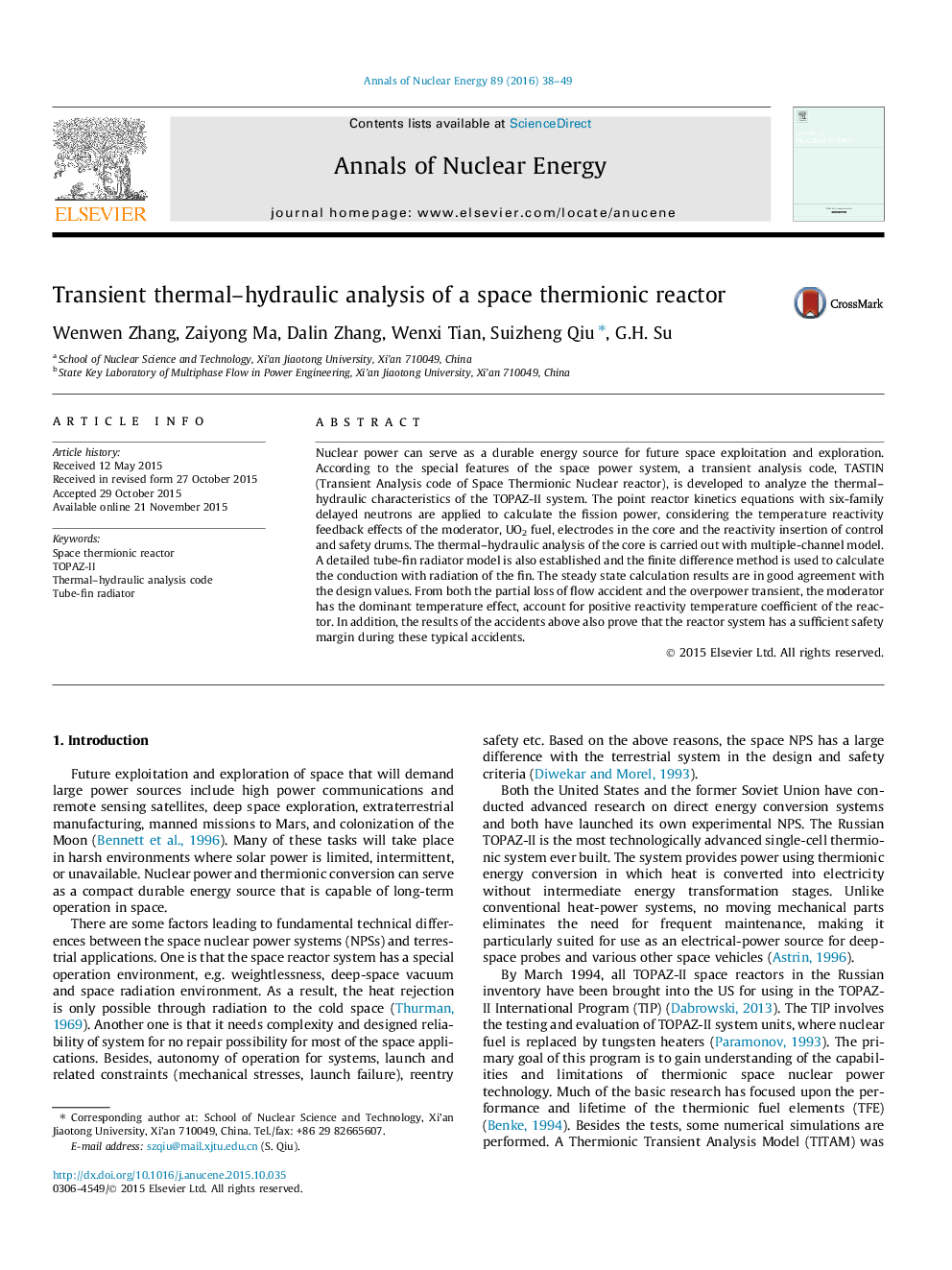| Article ID | Journal | Published Year | Pages | File Type |
|---|---|---|---|---|
| 1728051 | Annals of Nuclear Energy | 2016 | 12 Pages |
•The thermal–hydraulic model of space thermionic reactor is developed.•The temperature reactivity feedback effects of each material are considered.•A tube-fin radiator model is established and the finite difference method is applied.•The steady state, loss of flow accident and overpower transient are analyzed.
Nuclear power can serve as a durable energy source for future space exploitation and exploration. According to the special features of the space power system, a transient analysis code, TASTIN (Transient Analysis code of Space Thermionic Nuclear reactor), is developed to analyze the thermal–hydraulic characteristics of the TOPAZ-II system. The point reactor kinetics equations with six-family delayed neutrons are applied to calculate the fission power, considering the temperature reactivity feedback effects of the moderator, UO2 fuel, electrodes in the core and the reactivity insertion of control and safety drums. The thermal–hydraulic analysis of the core is carried out with multiple-channel model. A detailed tube-fin radiator model is also established and the finite difference method is used to calculate the conduction with radiation of the fin. The steady state calculation results are in good agreement with the design values. From both the partial loss of flow accident and the overpower transient, the moderator has the dominant temperature effect, account for positive reactivity temperature coefficient of the reactor. In addition, the results of the accidents above also prove that the reactor system has a sufficient safety margin during these typical accidents.
